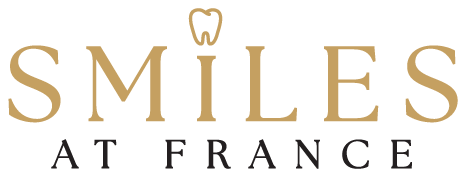Effective Tips For Proper Dental Flossing

Effective Tips For Proper Dental Flossing
Floss your teeth regularly and effectively. Regular tooth brushing helps take care of your teeth, but the gum line and the spaces between teeth need something more to keep them clean and healthy. Gum disease forms at the gum line and can also start in the spaces between teeth. A toothbrush cannot reach all the areas, so it is important that you floss every day to maintain your oral health. However, it is important that you floss using the right technique.
Proper Flossing Technique Tips
Follow these techniques to floss properly and effectively.
1. Floss Winding
Take 18 inches of floss and wind around the middle fingers in each hand. Pinch it between the index fingers and thumbs and leave up to 2 inches of length in between. Place the floss between the upper teeth using the thumb. Keep up to 2 inches of the floss length between fingers and guide it between the lower teeth using the index fingers.
When you use your middle digits on each hand for holding the floss, your thumbs and index fingers will be free to work it in between all the teeth. When you do this you will realize that it will be required to use different combinations of the thumb and different fingers to reach all the areas in your mouth.
2. Gliding
Use the zigzag motion to guide the floss between the teeth. Do it gently to avoid the floss from snapping. You should also glide the floss around the tooth’s side.
3. Sliding
It is also important to floss vertically. Slide the floss vertically on the tooth surface. Also slide it between the gum line. Make sure that each tooth is flossed using a clean part of the floss.
When flossing, it is important to keep it gentle to not hurt your gums. If it hurts, it means that you are doing it wrong and it can damage the tissue. There can be some discomfort for a few days in the beginning, but if there is pain or persistent discomfort, you should see a dentist.
If you find it difficult to get the floss to go, use a gentle see-saw motion. It is going to make it easy to slide it through the spaces between the teeth.
It is important to clean each tooth individually and this is achieved best by pulling the floss to create a C-like shape. However, most people never utilize this concept to its best. When you work the floss up/down, make sure that the complete surface of each tooth gets scrubbed.
Essential Surfaces to Clean When You Floss Your Teeth
When flossing, it is important to clean the contact area and the gum line.
- Contact Area: Plaque can build up at or below the area where two teeth come into contact. This is the area where cavities can form. Flossing can help in dislodging the plaque that may get accumulated here.
- Gum Line: Another area that is important to clean is under the gum line. If you don’t floss properly, the plaque buildup in this area can have a significant impact on your gum health. It is important to wrap the floss in a C-shape and slide it vertically through the length of the tooth to scrape and remove the subgingival plaque.
The proper technique should maximize the tooth surface that is cleaned. Whenever cleaning the front side, push the floss to the back so that it wraps the front as much as possible. When cleaning the backside, pull the floss to wrap the back as much as possible.
Test your Dental IQ at Mouth Healthy (brought to you by the American Dental Association)
Basic Tips
Now that you know the technique to floss properly, you should also know about some basics.
- Frequency: The American Dental Association (ADA) recommends flossing every day. If plaque is not properly removed, it can harden and become tartar or calculus. In this long-term, this can result in cavities.
- When to Floss: You can floss before or after brushing. You may also floss any time of the day. Choose a time when you have little extra minutes to floss daily without fail.
- Pressure: Make sure that the pressure of the floss is focused on the side of the tooth. It is also important not to direct the pressure into the gum tissue.
- Fresh Section: Make sure to use a fresh section of the floss for new areas. This prevents bacteria from spreading between different areas. This also prevents shredded or weaker floss from being used again.
Types of Floss
- There are several types of floss.
- Beginner Floss: floss made out of PTFE (Teflon: Glide) are very slippery, they pass through tight contacts easily. Their slipperiness makes them a lot less effective in removing the sticky, slimy plaque.
- Intermediate floss: Waxed floss is slightly better, yet the wax needs to wear off with several up and down motions against the tooth until the exposed unwaxed threads begins to remove the sticky plaque. There are also stretchy flosses that have a light wax on them that many people like.
- Expert floss: Woven, knit and unwaxed flosses removes the plaque immediately, but may shred in tight contacts. If shredding, use the PTFE floss to clean up the shreds floss.
Once you have flossed, it is recommended to rinse out using water. While flossing helps dislodge plaque from the teeth, it is required to rinse to remove the dislodged plaque from the mouth. So make sure to follow these tips for effective dental flossing. It’s just one step in preventative care of your teeth.
###
You might be interested in:
